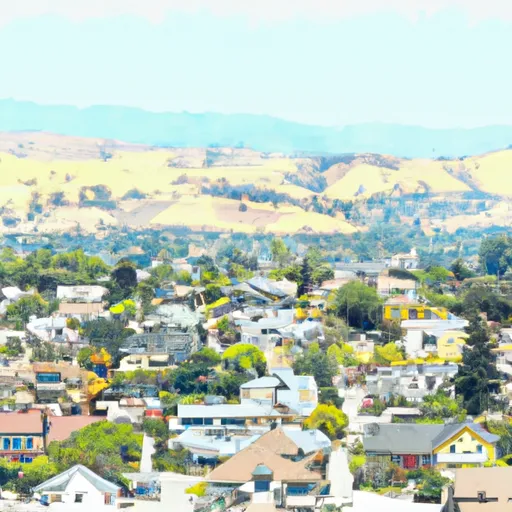-
 Snoflo Premium
Snoflo Premium
Get unlimited access to all our content
With no Ad interruptions! - Start Your Free Trial Login with existing account
Homeland
Eden Index
Climate
8.8
•
Recreation
5.1
•
Community
3.0
•
Safeguard
6.0/10

Homeland, California is a picturesque city located in the Riverside County, within the United States. The city experiences a Mediterranean climate, characterized by hot and dry summers, and mild winters. Summers are typically sunny with temperatures ranging from the mid-80s to low 100s Fahrenheit, while winters are cooler with temperatures averaging in the mid-60s.
Hydrologically, Homeland benefits from its proximity to the San Jacinto River and a network of underground aquifers, ensuring a steady water supply for its residents. The region is also home to a diverse range of flora and fauna, including oak woodlands, grasslands, and riparian habitats. These natural ecosystems support various wildlife species, making Homeland a haven for nature enthusiasts and birdwatchers.
Outdoor recreation opportunities in Homeland are abundant. The city is surrounded by stunning natural landscapes, such as the nearby San Jacinto Mountains and Lake Perris State Recreation Area. These areas offer opportunities for hiking, camping, fishing, and boating, providing a perfect escape for outdoor enthusiasts. Additionally, the region's mild climate allows for year-round outdoor activities, making Homeland an ideal destination for those seeking an active and nature-centric lifestyle.
What is the Eden Index?
The Snoflo Eden Index serves as a comprehensive rating system for regions, evaluating their desirability through a holistic assessment of climate health, outdoor recreation opportunities, and natural disaster risk, acknowledging the profound impact of these factors on livability and well-being.
Climate Health Indicator (CHI): 8.8
Homeland receives approximately
304mm of rain per year,
with humidity levels near 46%
and air temperatures averaging around
18°C.
Homeland has a plant hardyness factor of
9, meaning
plants and agriculture in this region tend to thrive here all year round.
By considering the ideal temperature range, reliable water supplies, clean air, and stable seasonal rain or snowpacks, the Climate Health Indicator (CHI) underscores the significance of a healthy climate as the foundation for quality living.
A healthy climate is paramount for ensuring a high quality of life and livability in a region, fostering both physical well-being and environmental harmony. This can be characterized by ideal temperatures, reliable access to water supplies, clean air, and consistent seasonal rain or snowpacks.
Weather Forecast
Streamflow Conditions
Santa Ana
Area Rivers
Santa Ana
Snowpack Depths
Santa Ana
Reservoir Storage Capacity
Santa Ana
Groundwater Levels
Recreational Opportunity Index (ROI): 5.1
The Recreational Opportunity Index (ROI) recognizes the value of outdoor recreational options, such as parks, hiking trails, camping sites, and fishing spots, while acknowledging that climate plays a pivotal role in ensuring the comfort and consistency of these experiences.
Access to outdoor recreational opportunities, encompassing activities such as parks, hiking, camping, and fishing, is crucial for overall well-being, and the climate plays a pivotal role in enabling and enhancing these experiences, ensuring that individuals can engage in nature-based activities comfortably and consistently.
Camping Areas
| Campground | Campsites | Reservations | Toilets | Showers | Elevation |
|---|---|---|---|---|---|
| Lake Skinner | None | 1,514 ft | |||
| Lake Perris State Rec Area | 351 | 1,600 ft | |||
| Dripping Springs | 23 | 1,644 ft | |||
| March ARB Military | None | 1,509 ft | |||
| Bogart Park | 26 | 3,171 ft | |||
| Lake ONeill Military | None | 135 ft | |||
| Yucaipa Regional Park | 51 | 2,658 ft |
Catastrophe Safeguard Index (CSI):
The Catastrophe Safeguard Index (CSI) recognizes that natural disaster risk, encompassing floods, fires, hurricanes, and tornadoes, can drastically affect safety and the overall appeal of an area.
The level of natural disaster risk in a region significantly affects safety and the overall livability, with climate change amplifying these risks by potentially increasing the frequency and intensity of events like floods, fires, hurricanes, and tornadoes, thereby posing substantial challenges to community resilience and well-being.
Community Resilience Indicator (CRI): 3.0
The Community Resilience Indicator (CRI) recognizes that education, healthcare, and socioeconomics are crucial to the well-being of a region. The CRI acknowledges the profound impact of these elements on residents' overall quality of life. By evaluating educational resources, healthcare accessibility, and economic inclusivity, the index captures the essential aspects that contribute to a thriving community, fostering resident satisfaction, equity, and social cohesion.

